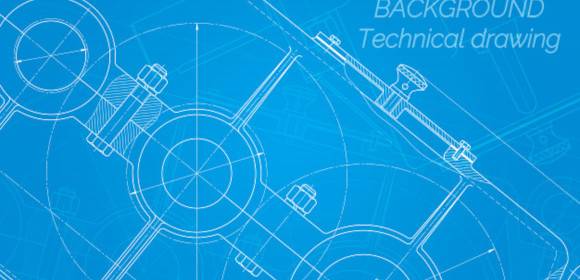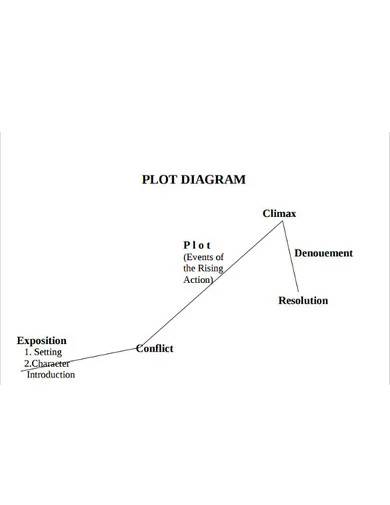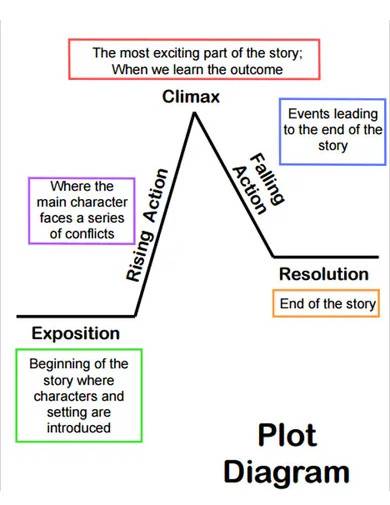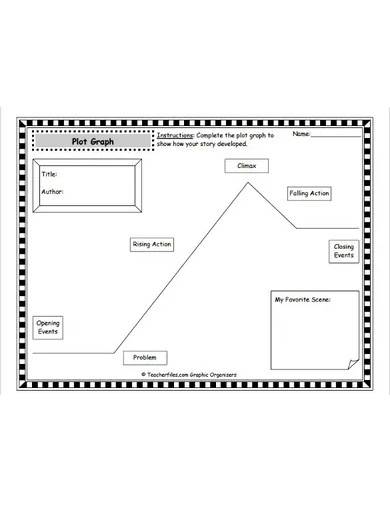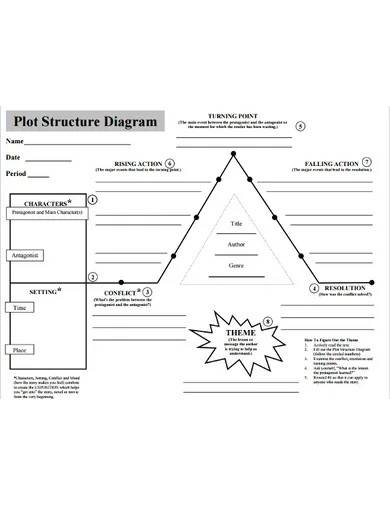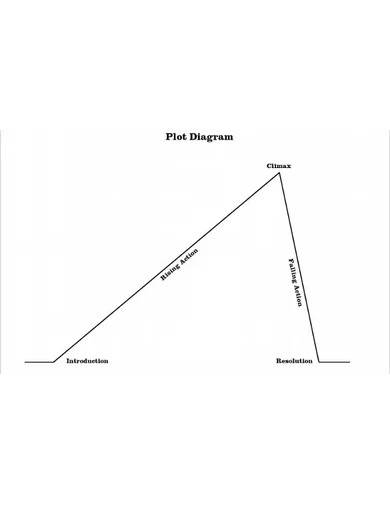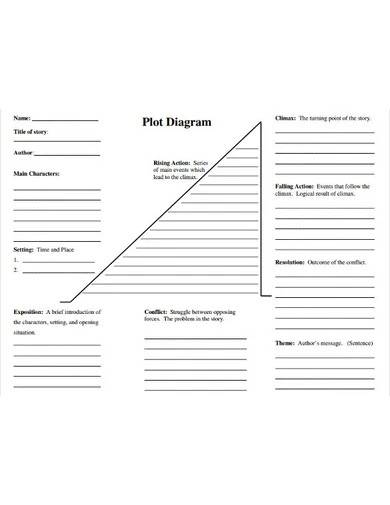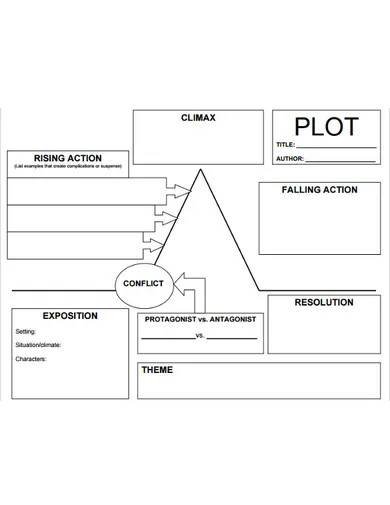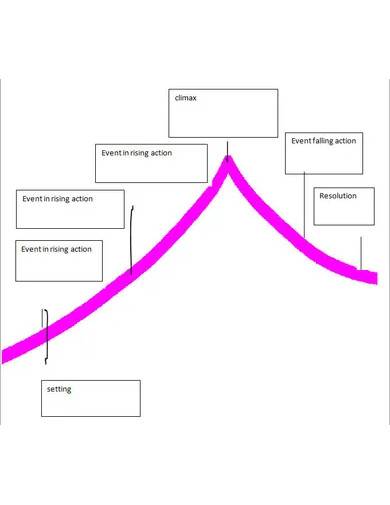Every story has a plot no matter what format a narrative story is. A plot is what makes up the story. Without a plot, there is no story. It’s only a bunch of words that are string together. So it’s important, especially for writers to know what a plot and its elements, how to determine each element from another, and how to come up with a perfect plot for an exciting and unique story. And so, that’s when knowing how to identify and make a plot diagram is fundamental in coming up with a story. In this article, we will discuss further what a plot diagram is about and how to analyze the different elements of the plot.
FREE 10+ Plot Diagram Samples
1. Free Plot Diagram Template Download
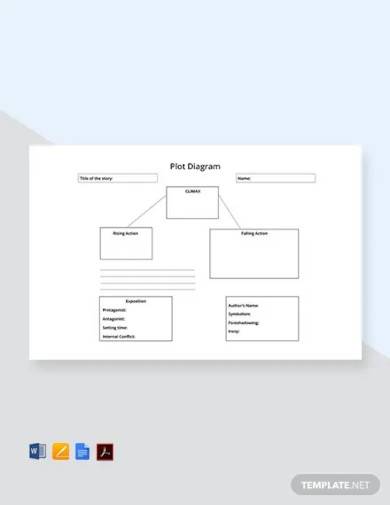
2. Plot Diagram Template
3. Professional Plot Diagram Template
4. Plot Diagram Graph Template
5. Sample Plot Curve Diagram
6. Plot Structure Diagram Format
7. Printable Plot Diagram
8. Blank Plot Diagram Template
9. Simple Plot Format Template
10. Editable Plot Diagram Template
11. Basic Plot Diagram Template
What is a Plot Diagram?
A plot diagram is a pyramid-shaped tool used to organize parts of the story to analyze its content and its key features. It’s also a useful tool for writers to map out the events of the story. The pyramid-shaped structure of the plot diagram represents the beginning, middle, and end of a story. This concept was first conceptualized by was described by Aristotle and later modified by Gustav Freytag by adding a rising action and a falling action to the diagram.
How to Create a Plot Diagram?
These elements in the plot are identified as the highlights or major events in a story. This where the story takes a big turn or progresses into another sequence of events. These elements are:
- Exposition: The beginning of the story. It is the part where the characters are introduced, the setting is described, and the conflict is established. This part is also where you show the normal lives of your characters before the conflict or problem happens which will change their daily activities or affect the characters either in a negative or positive way. Usually, the conflict that happens can also be described as an inciting incident.
- Rising Action: The rising action builds up the tension of the story for the climax. This is the part where the suspense of the conflict builds up and gets complicated. This part is also the largest part of the story. This is also where the dilemma takes place. A dilemma or crisis is a sub-element of the plot where the character is put in a difficult position to make a choice that would greatly affect the climax.
- Climax: This part is the most exciting and engaging part of the story. This is the part where the rising action has been working towards. All the outcomes of the decisions made by the characters are revealed.
- Falling Action: Once the excitement has faded away, the falling action now takes place. This part is where events happen after the climax and that will lead to the resolution of the story.
- Resolution: The resolution or denouement is where the story ends. It resolves the characters’ conflicts and issues and incorporates all the changes that happened to them in this part. Basically, this is the part where the story gives closure.
FAQs
How do you plot a story?
Plotting a story can be difficult for writers especially if they’re not sure how they want their story to take place. However, there are some tips to help them: Create a brief outline of the story, write out the central conflict, pick a point of view, and from that writers can now select the structure of their story.
What is the first step in comprehending a plot?
To comprehend a plot, you need to examine the obstacles, the climax, and the resolution of the plot. This will help you analyze the other parts of the plot better.
What is the difference between plot and theme?
The plot is the actual storyline or a narrative where events take place while the theme is the main idea of the story.
Now that you are aware of what a plot diagram is, how it works, and how it is written, it’ll be easier for you to analyze a story in its different parts and it is also easier for you to write and organize your story. If you want to start practicing how to analyze a plot diagram, refer to our sample templates above. They are free to download and are also printable so you can download as many as you like!
Related Posts
Retirement Speech Samples & Templates
Weekly Schedule Samples & Templates
Contractual Agreement Samples & Templates
FREE 9+ Amazing Sample Church Bulletin Templates in PSD | PDF
Sample Business Card Templates
Sample Cashier Job Descriptions
Questionnaire Samples
FREE 10+ Sample HR Resource Templates in PDF
FREE 49+ Sample Job Descriptions in PDF | MS Word
FREE 23+ Sample Event Calendar Templates in PDF | MS Word | Google Docs | Apple Pages
Company Profile Samples
FREE 10+ Leadership Report Samples [ Development, Training, Camp ]
FREE 24+ Sample Payment Schedules in PDF | MS Word
FREE 10+ Return to Work Action Plan Samples in PDF | DOC
Autobiography Samples & Templates
